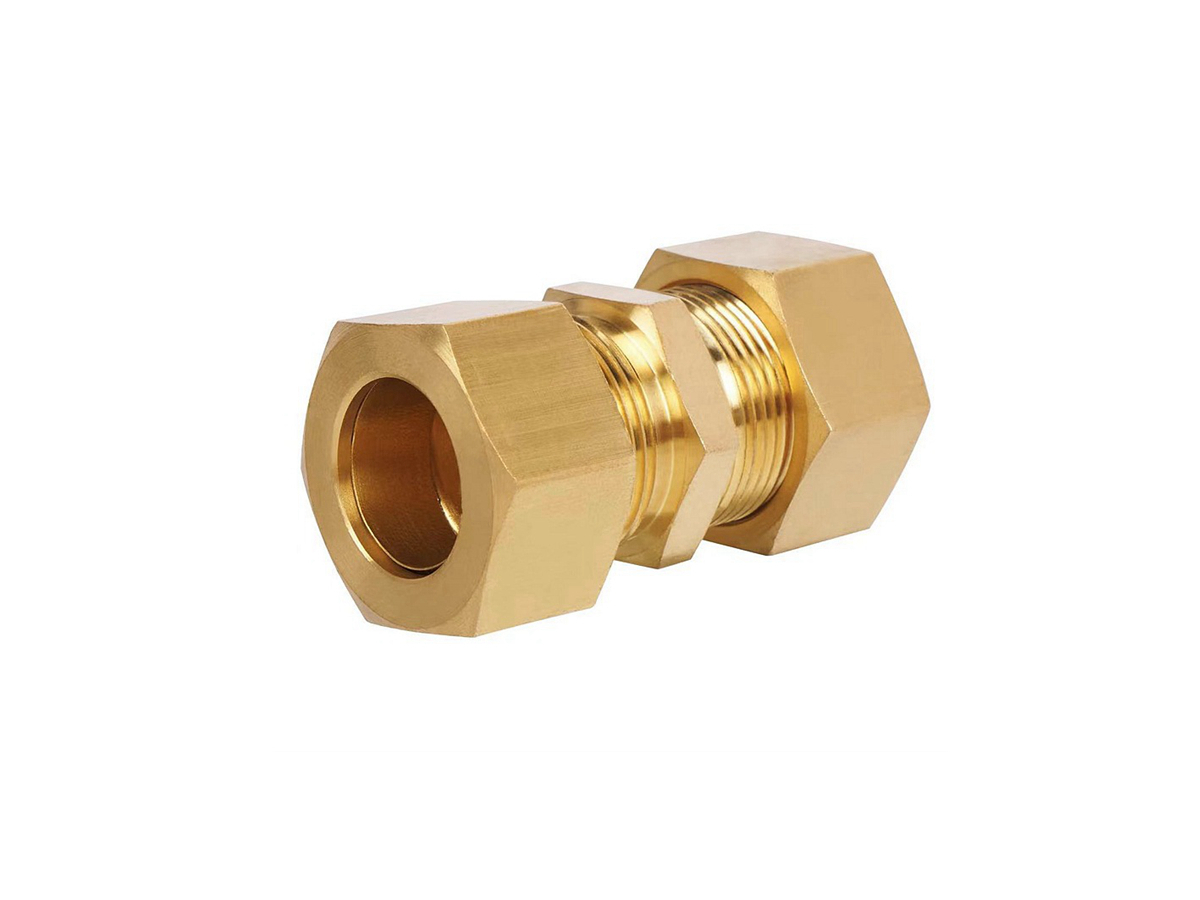Brass C360 Precision CNC Machining Service for Low-Volume Industrial Parts
Introduction to Brass C360 CNC Machining
Low-volume manufacturing of industrial components demands materials that offer excellent machinability, consistent quality, and cost-efficiency. Brass C360, also known as free-machining brass, is particularly suited to precision CNC machining due to its exceptional machinability (rated 100%) and ability to achieve tight tolerances (±0.005 mm). This makes it ideal for producing fittings, connectors, valves, and intricate mechanical parts required in industrial equipment, automation systems, and consumer products.
Utilizing professional CNC machining services, manufacturers optimize small-batch production, delivering high precision, consistency, and cost-effectiveness in brass industrial components.
Material Comparison for Brass C360 Machined Components
Material Performance Comparison
Material | Tensile Strength (MPa) | Machinability | Corrosion Resistance | Typical Applications | Advantage |
|---|---|---|---|---|---|
360-400 | Excellent (100%) | Good | Valves, connectors, fittings | Exceptional machinability, precise tolerances | |
380-420 | Very Good (90%) | Good | Complex fittings, hardware | Good machinability, slightly higher strength | |
276-310 | Very Good (85%) | Excellent | Lightweight housings, structural parts | Lightweight, superior corrosion resistance | |
550-650 | Good (78%) | Excellent | Precision shafts, valves | High strength, excellent corrosion resistance |
Material Selection Strategy for Low-Volume Brass Components
Selecting the optimal material for low-volume CNC machined industrial parts involves balancing machinability, precision, mechanical properties, and corrosion resistance:
Brass C360 is ideal for precision fittings, connectors, and valves due to its outstanding machinability (100%), enabling rapid and precise machining even in intricate geometries.
Brass C377, offering slightly higher tensile strength (up to 420 MPa), is suitable for applications requiring slightly more strength while maintaining excellent machinability.
Aluminum 6061-T6 suits components where weight savings and superior corrosion resistance are essential, ideal for precision housings and lightweight structures.
Stainless Steel SUS303 is best for applications demanding higher mechanical strength and exceptional corrosion resistance, such as precision shafts and valves, albeit with reduced machinability compared to brass.
CNC Machining Process Analysis for Brass C360 Industrial Components
CNC Machining Processes Performance Comparison
CNC Machining Technology | Dimensional Accuracy (mm) | Surface Roughness (Ra μm) | Typical Applications | Key Advantages |
|---|---|---|---|---|
±0.005-0.01 | 0.4-1.0 | Complex fittings, valve housings | High precision, versatile shaping | |
±0.005-0.01 | 0.6-1.2 | Cylindrical fittings, connectors | High accuracy, efficient machining | |
±0.01-0.03 | 1.6-3.2 | Threaded fittings, precise holes | Quick turnaround, accurate processing | |
±0.002-0.005 | 0.05-0.2 | Sealing surfaces, precision interfaces | Exceptional precision, superior finishes |
CNC Machining Process Selection Strategy for Brass Industrial Components
Selecting the correct CNC machining process depends on the complexity, accuracy requirements, surface quality, and specific functional requirements:
CNC Milling effectively handles complex brass components requiring intricate geometries, precise shaping, and tolerances (±0.005-0.01 mm), ideal for valve housings and custom fittings.
CNC Turning is highly efficient for producing cylindrical components such as connectors and precision fittings, delivering tight tolerances and consistent dimensional accuracy.
CNC Drilling is suitable for rapidly creating threaded fittings and precise mounting holes with moderate dimensional tolerances (±0.01-0.03 mm), essential for quick-turnaround small-batch production.
CNC Grinding delivers ultra-high precision (±0.002-0.005 mm) and exceptional surface finishes (Ra ≤0.2 μm), particularly beneficial for sealing surfaces and precision interfaces in industrial components.
Surface Treatment Solutions for Brass C360 Machined Parts
Surface Treatment Performance Comparison
Treatment Method | Wear Resistance | Corrosion Resistance | Max Operating Temp (°C) | Typical Applications | Key Features |
|---|---|---|---|---|---|
Excellent | Exceptional (~1000 hrs ASTM B117) | 400 | Valves, fittings, connectors | Uniform coating, excellent corrosion resistance | |
Moderate | Very Good (~800 hrs ASTM B117) | 250 | Brass hardware, connectors | Improved surface corrosion resistance | |
Good | Very Good (~800 hrs ASTM B117) | 200 | Casings, decorative hardware | Durable and aesthetic surface finish | |
Excellent | Outstanding (~1200 hrs ASTM B117) | 450 | Precision components, decorative fittings | Excellent hardness, enhanced aesthetics |
Surface Treatment Selection Strategy for Brass Components
Choosing the appropriate surface treatments enhances the durability, corrosion resistance, and aesthetics of brass C360 machined components:
Electroless Nickel Plating significantly improves wear resistance and corrosion protection, ideal for precision valves and connectors needing consistent coating thickness and durability.
Passivation enhances corrosion resistance, providing good surface protection for brass hardware and fittings in moderately corrosive environments.
Powder Coating offers an effective solution for components needing corrosion protection and a durable, aesthetic finish, particularly suited to consumer-facing hardware and casings.
Chrome Plating provides exceptional surface hardness, corrosion resistance, and visual appeal, and it is ideal for precision fittings, decorative, industrial hardware, and components exposed to demanding conditions.
Typical Prototyping Method
CNC Machining Prototyping: Offers tight dimensional tolerances of ±0.005 mm and precise surface finishes (Ra ≤0.8 μm), suitable for brass prototypes requiring exact geometry and functional testing.
Material Jetting: Capable of achieving layer thicknesses as fine as 16-32 microns, ideal for creating intricate brass prototypes with detailed features and high-precision geometrical accuracy.
Binder Jetting: Provides complex geometric capabilities, with layer resolutions ranging from 50 to 100 microns, beneficial for rapid and economical brass prototype fabrication, validating designs before final CNC production.
Quality Control Standards for Brass C360 CNC Machined Components
Dimensional accuracy verification using advanced Coordinate Measuring Machines (CMM).
Surface roughness measurements were performed using precision profilometers.
Mechanical testing (tensile strength, hardness) in compliance with ASTM and ISO standards.
Corrosion resistance verification under standardized tests (ASTM B117 salt spray tests).
Non-destructive inspection (visual inspection, eddy current) ensuring defect-free components.
Complete documentation and traceability compliant with ISO 9001 quality management standards.
Industry Applications of Brass C360 Machined Industrial Components
Precision valves and plumbing fittings.
Connectors, couplings, and mechanical hardware.
Instrumentation parts for automation and control systems.
Low-volume custom hardware and consumer components.
Related FAQs:
Why is Brass C360 ideal for precision CNC machining?
What are the main applications of CNC machined Brass C360 components?
Which CNC machining process is most suitable for brass parts?
How do surface treatments enhance brass component durability?
What quality standards are followed for CNC machined brass components?

